- Quick Read
- Deep Read ( 4 Min. )
Monitor Daily Podcast
- Follow us:
- Apple Podcasts
- Spotify
- RSS Feed
- Download
TODAY’S INTRO
The challenge for Fox News and all media
 Mark Sappenfield
Mark Sappenfield
I will never forget my first day in Journalism 101. The white-haired professor stalked among the desks and then asked the question calibrated to change our lives, delivered with perfect pitch and timbre.
“Who decides what is news?”
We gave all manner of foolish answers until he cleaved the classroom like a sword stroke.
“You do.”
The statement was meant to impress, intimidate, and awe. We were the gatekeepers. The responsibility seemed a burden and a solemn oath. Today, it is also a fallacy. In the internet era, we journalists don’t control the news. You do. You now have more choices and more voices competing for your attention – some good, some not so good. We now know which article you click on. We still play an important role, but all this demands that we cater more to you.
That’s not always bad. But it means we have to write things that you will read or we’ll soon be unemployed, as many journalists now are.
I don’t have sympathy for Fox News. New documents show they knowingly reported lies as truth to “respect” their audience after the 2020 election. Yet I appreciate the challenge they face. It is only an acute and acutely reckless case of what is happening across the news industry.
The Monitor is fortunate to be supported by a church that stands firmly behind journalism to “bless all mankind,” in the words of our founder, Mary Baker Eddy. Often that means doing journalism fewer people may be clamoring to read. Stories from Jordan to Jammu. Stories that don’t hew to partisan narratives. Stories that aim to build rather than tear down.
Page views and ratings can often tell us about humanity’s lowest urges. But there are still places for journalism that hopes to lift us to our higher selves, even – and perhaps especially – when that is inconvenient.
Share this article
Link copied.

Help fund Monitor journalism for $11/ month
Already a subscriber? Login

Monitor journalism changes lives because we open that too-small box that most people think they live in. We believe news can and should expand a sense of identity and possibility beyond narrow conventional expectations.
Our work isn't possible without your support.
Ahead: The mother of all budget showdowns?
President Biden’s budget proposal came out today. It offers a portrait of what he values and how he is preparing for the fights ahead – from the federal debt limit to the 2024 election.

President Joe Biden’s $6.8 trillion budget proposal, released Thursday, is more than just a Democratic wish list for government spending, taxation, and deficit reduction.
It’s a statement of values. It’s an opening bid in critical negotiations with Republicans over Social Security and other increasingly insolvent safety-net programs and, most urgently, the need to raise the statutory limit on the federal government’s ability to borrow money. And it’s a signal moment in the soft launch of President Biden’s expected 2024 reelection campaign.
The pandemic has raised the stakes. Government spending, by Presidents Donald Trump and Biden, to help struggling Americans and businesses has ballooned the deficit and debt to a place once thought unfathomable.
By 2033, the nonpartisan Congressional Budget Office (CBO) projects, the federal debt will clock in at close to $52 trillion. Today, the debt stands at an already astounding $31 trillion. It’s reached the point where the numbers are so massive that they almost feel meaningless.
But to some members of Congress, the debt and deficit do matter – because they have real-world implications for the government’s ability to function. On Social Security, which the CBO projects is headed for insolvency by 2033, a bipartisan group of senators is working privately on a compromise to set the program on a sustainable path.
Ahead: The mother of all budget showdowns?

President Joe Biden’s $6.8 trillion budget proposal, released Thursday, is more than just a Democratic wish list for government spending, taxation, and deficit reduction.
It’s a statement of values. It’s an opening bid in critical negotiations with Republicans over Social Security and other increasingly insolvent safety-net programs and, most urgently, the need to raise the statutory limit on the federal government’s ability to borrow money. And it’s a signal moment in the soft launch of President Biden’s expected 2024 reelection campaign.
But for now, it’s an opportunity to examine exactly what Mr. Biden is trying to do with federal spending and priorities at a fraught moment in the nation’s history.
In a speech in Philadelphia, the president took the fight to Republican House Speaker Kevin McCarthy, saying, “Show me your budget. I’ll tell you what’s your value.”
The United States is arguably more politically polarized than it’s been in decades. That does not bode well for the ability to do seemingly simple things like establish the outlines of a federal budget.
Certain functions enjoy broad public support, such as national defense and providing for those who truly can’t provide for themselves. But in the new normal of the post-pandemic era, the ability to allocate spending for much else is open to negotiation.
The pandemic itself has raised the stakes. Large sums of government spending, by Presidents Donald Trump and Biden, to help struggling Americans and businesses have ballooned the deficit and debt to a place once thought unfathomable.
By 2033, the nonpartisan Congressional Budget Office (CBO) projects, the federal debt will clock in at close to $52 trillion. That’s trillion with “t.” Today, the debt stands at an already astounding $31 trillion. And that’s not the deficit – annual overspending by the federal government. That’s the debt, the accumulation of annual deficits, which has become much more expensive to service of late, with the rapid rise in interest rates.
It’s reached the point where the numbers are so massive that they almost feel meaningless.

White House Office of Management and Budget, U.S. Social Security Administration, Congressional Budget Office
But to some members of Congress, the debt and deficit do matter – because they have real-world implications for the government’s ability to function. On Social Security, which the CBO projects is headed for insolvency by 2033, a bipartisan group of senators is working privately on a compromise to set the program on a sustainable path. Sens. Bill Cassidy, Republican of Louisiana, and Angus King, an independent from Maine who caucuses with the Democrats, are collaborating privately with some 10 other senators to work out a solution. Fixes to Medicare, the nation’s health insurance program for seniors, are also a pressing concern. The senators’ proposal for both programs is expected in May.
The retirement of the massive baby-boom generation is driving the need for reform of the public retirement system. But the challenges in federal budgeting go far beyond that. Defense spending is also under the microscope, with the Biden administration committed to aiding Ukraine following the Russian invasion a year ago.
In its initial release on the 2024 budget, the White House highlighted what it says would be nearly $3 trillion in deficit reduction over 10 years. To help pay for that, the administration advocates $5 trillion in tax increases on wealthy individuals and corporations, including a new 25% minimum tax on billionaires and an increase in the corporate tax rate, from 21% to 28%.
For longtime advocates of bipartisan problem-solving and fiscal responsibility, today’s budget challenges seem as tough as ever.
“Ironically, as the situation has gotten worse, the desire to compromise has lessened,” says Bob Bixby, executive director of the nonpartisan Concord Coalition, which encourages fiscal responsibility.
But Mr. Bixby finds some solace in his group’s continuing efforts to engage Americans in the search for solutions.
“We find people are still open to a mix of tax increases and benefit changes,” he says. “When you get people outside a highly partisan atmosphere, looking at options, they’re usually willing to look at it in a very rational way.”
Shai Akabas, director of economic policy at the Bipartisan Policy Center in Washington, expresses frustration over a budget process that he says “has largely devolved into a political exercise.”
Spending has become an “easy answer” for both parties, Mr. Akabas says, “because you’re giving out money and you’re not telling anyone they need to pull back.”
But he is somewhat optimistic that there are serious, private, bipartisan discussions in the Senate over Social Security and Medicare, referring to the Cassidy-King group – ”frankly, more serious conversations than I’ve seen at any time in the last decade.”
“It doesn’t mean something’s going to pass this year,” Mr. Akabas says. “But the first step toward solving the problem is having serious discussions about the ways that we can solve the problem.”

White House Office of Management and Budget, U.S. Social Security Administration, Congressional Budget Office

Behind Georgia unrest, a split over Russia and West
New unrest in Georgia suggests the country is polarizing amid the pressures of the Ukraine war, with important consequences for the region and its connection to the West.

- Quick Read
- Deep Read ( 5 Min. )
The current pitched battles between protesters and riot police in Tbilisi, Georgia’s capital, are the sharpest confrontation in many years between the country’s often fiery pro-Western opposition and its more conservative stability-oriented government.
The most direct cause of the unrest is government legislation that would require politically active civil-society groups and media that receive more than 20% of their funding from abroad to register as “foreign agents.”
After two nights of violent protests, the government appeared to back down and announced that it will scrap the legislation. But the opposition says that protesters will keep the pressure going until it does. It’s a clear sign that amid the regional strains of the war in Ukraine, their dissatisfaction with what they see as the Russia-friendly government runs much deeper than just unhappiness over a single proposed law.
“Our government and parliament decided to adopt laws that have nothing democratic about them and are anti-European in their essence,” says Murtaz Shaluashvili, an activist with the opposition party United National Movement. “We consider these to be Russian laws, the same ones that destroyed democracy in Russia after they were introduced. Our authorities have the same intentions, and we do not trust them.”
Behind Georgia unrest, a split over Russia and West
The cobbled streets of Tbilisi, the capital of the Caucasus republic of Georgia, have seen a lot of political turmoil since the fall of the USSR three decades ago.
But the current round of pitched battles between protesters and riot police near the country’s parliament, on picturesque Rustaveli Avenue, is the sharpest confrontation in many years between Georgia’s often fiery pro-Western opposition and the more conservative stability-oriented government, which currently holds a comfortable majority in parliament.
The most direct cause of the unrest is government-authored legislation that would require politically active civil-society groups and media that receive more than 20% of their funding from abroad to register as “foreign agents.” That would subject them to curbs very similar to those that have been in effect in Russia for around a decade.
After two nights of violent protests, the government appeared to back down and announced that it will scrap the legislation. But because the Georgian parliament already passed the “foreign agent” bill on its first reading on Tuesday, it cannot kill it until its second reading, now slated for a plenary session on March 10.
The opposition says protesters will keep the pressure going in the interim. It's a clear sign that their dissatisfaction with what they see as the Russia-friendly government of the ruling Georgian Dream party – amid the regional strains of war in Ukraine and conflict next door between Armenia and Azerbaijan – runs much deeper than just unhappiness over a single proposed law.
“Our government and parliament decided to adopt laws that have nothing democratic about them and are anti-European in their essence,” says Murtaz Shaluashvili, an activist with the United National Movement, an opposition party founded by Mikheil Saakashvili, who himself led the “Rose Revolution” 20 years ago that unseated pro-Russia president Eduard Shevardnadze. “We consider these to be Russian laws, the same ones that destroyed democracy in Russia after they were introduced. Our authorities have the same intentions, and we do not trust them.”

In the shadow of Russia’s war
Georgia, which fought and lost its own brief war with Russia over two breakaway territories in 2008, has long occupied a nether world between Russia and the West, with a majority of the population repeatedly expressing pro-Western aspirations and governments (including the current one) who want to steer the little country into the European Union.
But the war in Ukraine has illustrated the dangers of antagonizing Russia. At the same time, the influx of around 100,000 often highly skilled Russians fleeing military mobilization and a rush of entrepreneurs looking to reroute trade around Western sanctions, have provided Georgia with economic and political incentives to stay on the sidelines of the Ukraine conflict.
“The Georgian public is overwhelmingly pro-Western but, like any population, wants peace not war,” says Tornike Turmanidze, a senior fellow at the Rondeli Foundation in Tbilisi, which specializes in strategic affairs. “Russia’s invasion of Ukraine has stimulated events. Before the war the Georgian Dream government tried to balance between Russia and the West, but that became difficult after hostilities began. They started warning that the West is trying to drag Georgia into the war against Russia, and using anti-Western rhetoric to play on the public mood.”
In Moscow, commentators say that this week’s violent street clashes with police, which featured an attempt to storm Georgia’s parliament Wednesday night, only confirm the need for laws that limit the ability of foreign interests to fund radical civil-society groups and associated media. Some Russian experts say that yet another “color revolution” instigated by the West is unfolding on the streets of Tbilisi.
“Part of Georgian society is in opposition to the present authorities, about 20%,” says Alexander Skakov, deputy director of the official Institute of Oriental Studies in Moscow. “They only need a pretext to take to the streets and upset stability. The authorities have calmed the situation by withdrawing the legislation. Otherwise things could have gotten much worse, as they have in the past.”
But some argue that the Georgian Dream party is acting, amid regional breakdown and war, to consolidate power by following the well-trodden path established by Russian President Vladimir Putin. Russia was in this position just over a decade ago, with authorities arguing that a draft law to compel foreign-funded civil-society groups to register as “foreign agents” and open their financial books was merely in the interests of public disclosure and transparency, and not an oppressive measure.

After a decade that has seen almost all Russian politically active civil-society groups shut down and most independent media driven out of the country, almost any critical conversation among Russians has become difficult and sometimes dangerous.
“Basically, the Georgian Dream government wants to stay in power forever,” says Dr. Turmanidze. “Like any government leaning toward authoritarianism, they are trying to crack down on democratic elements of society.
“At the same time, they are trying to apply for EU candidate membership, and have been given a list of conditions that Georgia is expected to meet. They have not fulfilled these conditions, and this proposed legislation is in stark contradiction to EU requirements. Right now the government is trying to deceive the EU,” he says. “If they don’t get the candidate status, I think they will just carry on, and perhaps move closer to Russia.”
Income from Russia
Ironically, the war has led to major expansion of Georgia-Russia trade, up 74% in 2022. Several post-Soviet states, including Georgia, as well as big countries like India, have profited by helping Moscow to evade sanctions and import needed Western goods while buying large amounts of cheap Russian commodities in return.
Georgia has also benefited from an influx of Russian draft dodgers and business people seeking to maintain their Russian market connections while avoiding the impact of Western sanctions.
“More than 100,000 Russian citizens came to live in Georgia in the past year, and they manage to get money in various ways, including crypto-wallets, which benefits the Georgian economy,” says Dr. Turmanidze. “Their presence is large enough to have become an economic fact. And our government is using this influx of money from Russia to justify better relations with Moscow. This is what worries the opposition.”

A deeper look
Big backers of Texas public schools: Rural Republicans
Rural Texans are deeply conservative – and deeply committed to their public schools. How will that play out in an era when national Republicans support school choice policies seen by some educators as damaging to public schools?

- Quick Read
- Deep Read ( 18 Min. )
Rural Texans are important to Republican dominance in Texas, and public schools are important to rural Texans. This is because in rural America, a town is only as healthy as its public schools.
As the country’s education landscape has diversified into one of public, charter, private, and home school options, efforts in the Lone Star State to keep pace have crashed against a wall of deeply conservative Republicans who are deeply loyal to public schools.
Until this year, perhaps. The state legislature is likely to vote on creating an education savings account program that would redirect public school funding to home schooling or private school tuition.
In rural communities, these debates have real-life stakes. Where wages are low and jobs are scarce, a good education is still the surest route to breaking the generational cycle of poverty. Local schools are often not just the social and cultural hub of the community, but the biggest employers as well.
And in rural Texas – which holds half of the state’s public school districts, and the decisive Republican voting bloc in every statewide election since the Clinton administration – these debates are especially complex.
“A lot of our values line up with the Republican Party, but the Republicans are not public school-friendly, so it is a dilemma for us,” says Jason Harris, Altanta, Texas, schools superintendent. “Public education is not perfect, but I dare to say private education is not perfect either.”
Big backers of Texas public schools: Rural Republicans
When a well-known community member dies in Atlanta, Texas, the funeral is often held in the high school auditorium.
“It’s the only place in town that can hold that many people,” says Atlanta schools Superintendent Jason Harris. “It’s just the heartbeat of the local community.”
Downtown Atlanta – about 10 miles from the border of Louisiana and Arkansas – features a grocery store, a hardware store, a public library, a feed store, and a couple of auto parts stores. There are about a dozen churches.
In the rural towns where he’s worked, these social and cultural bonds are as important as any other service the public schools provide. The school and the community are indistinguishable, sharing Friday night football and Sunday morning services, good times and bad times.
“I’ve always been extreme East Texas,” says Mr. Harris, in a thick, piney woods drawl. Like most rural public school teachers, Mr. Harris taught multiple subjects and coached multiple sports. (Science was his area of expertise.) In the past 30-plus years, he’s never worked more than 20 miles from the Louisiana or Arkansas state line.
“Strong Christian, conservative values ... the towns I’ve been in, they want their public schools to represent that,” he adds. “There is not a one-size school that fits everybody, but public schools do our best to do that for all kids.”

For decades, this has been the dynamic in Texas: Rural Texans are important to Republican dominance in the state, and public schools are important to rural Texans. This is because in rural Texas, as in rural America, a town is only as healthy as its public schools.
Thus, rural lawmakers are often decisive in determining the state’s education policy. As the country’s education landscape has diversified beyond the traditional public school system toward public, charter, private, and home-school options, efforts in the Lone Star State to keep pace have crashed against a wall of deeply conservative Republicans who are deeply loyal to public schools.
That is, until this year, perhaps. With the anxieties and uncertainties of pandemic schooling still fresh in the memory, with public education dragged into the culture wars maelstrom, and with a record surplus of over $30 billion to play with, Texas conservatives are more optimistic than ever of significantly altering K-12 education in the state.
Most controversially, the state legislature – in session until the end of May – is likely to vote on creating an education savings account (ESA) program. Similar to voucher programs taking hold in other Republican-led states, it would allow eligible parents to use public funds for “educational services” like tutoring, home-school supplies, or private school tuition. Parents of a student would receive $10,000 a year, and the student must have been enrolled in public school the previous year, according to one bill. While school choice has increased in Texas, the state has never allowed public tax money to be used for private education.
The damage such programs inflict on the public school system, and the efficacy of the programs themselves, are hotly debated. There isn’t much academic consensus on those questions, but states like Texas are considering them in a climate of declining public school enrollment, stagnant teacher salaries, and safety and security concerns.
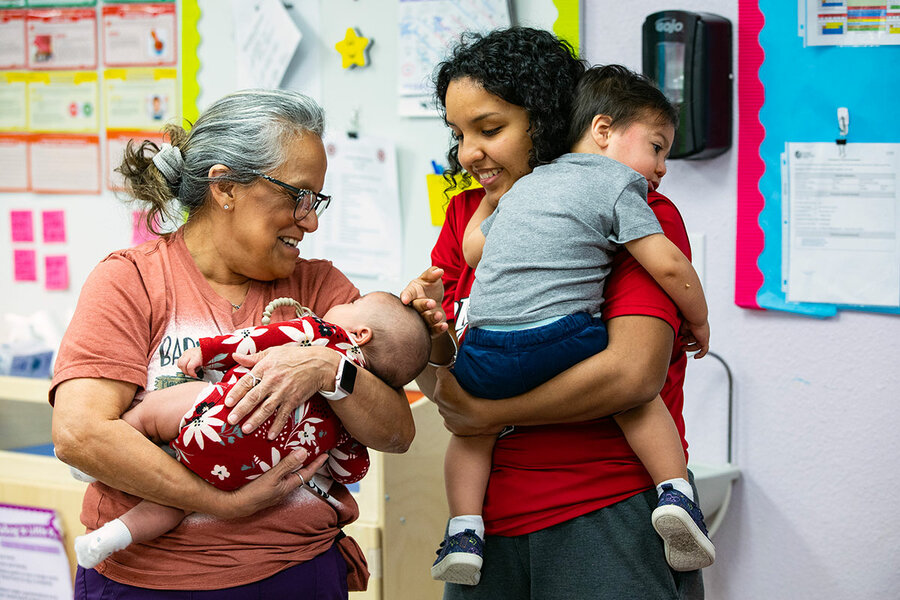
In rural communities, these debates have real-life stakes. Where wages are low and jobs are scarce, a good education is still the surest route to breaking the generational cycle of poverty. Local schools are often not just the social and cultural hub of the community, but the biggest employers as well.
And in rural Texas – which holds half of the state’s public school districts, and the decisive Republican voting bloc in every statewide election since the Clinton administration – these debates are especially complex.
“A lot of our values line up with the Republican Party, but the Republicans are not public school-friendly, so it is a dilemma for us,” says Mr. Harris.
“It’s hard on us to have people in Austin telling us how to run our schools,” he adds. “Public education is not perfect, but I dare to say private education is not perfect either.”
Saving schools – and towns
Superintendent Steve VanMatre started out as a janitor.
After moving to Corpus Christi, he spent nights cleaning an elementary school while he earned college credits during the day. After a few years, he had enough credits to be a substitute teacher. For a few more years he did both, sometimes cleaning at night the school he had taught in earlier that day, as he progressed from teacher to principal and then superintendent.
After a decadeslong career in public education in South Texas, he retired.
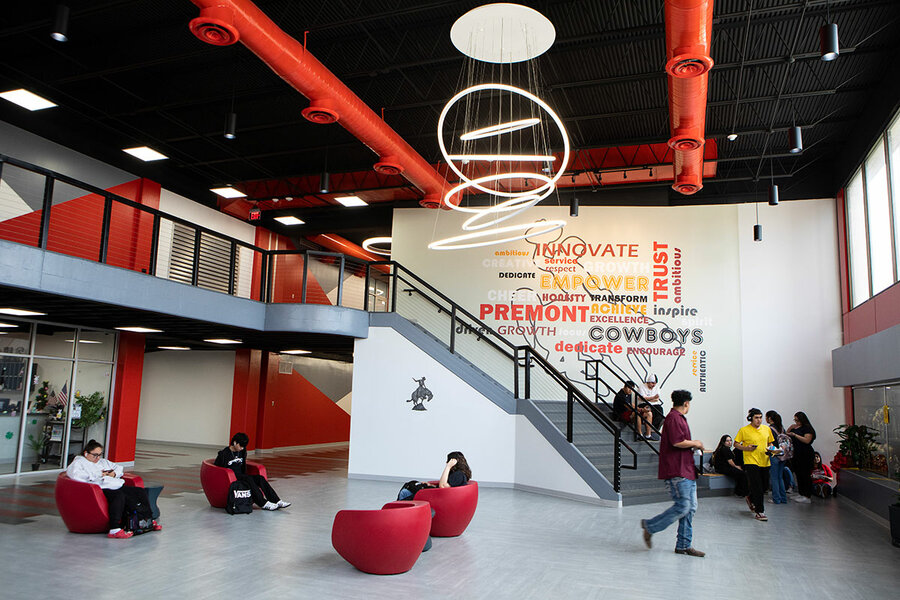
Then he unretired to become superintendent of the Freer Independent School District (ISD) in 2014. A state committee had just completed a scathing report about the district’s inefficiency. It had already been consolidated once by the state, and now the threat of consolidation loomed again.
“There are ghost towns all across rural Texas of communities that don’t have school districts anymore,” says Mr. VanMatre. By the time he left three years later, enrollment was stable, teacher retention had improved, and the town had passed a bond to build new facilities. So Mr. VanMatre stepped into an even worse situation 60 miles southeast to become superintendent of Premont ISD.
There was low enrollment, no certified teachers in third and fourth grades, and no varsity football program. The high school building didn’t have heat or hot water. One afternoon in January 2017, pulling lunch duty with Mike Gonzalez, the principal at the time, they could see their breath mist in the air as they talked. The district’s struggles made national news. It received two closure notices from the state in six years.
“It hurt thinking that it wasn’t going to be around anymore,” says Claudette Garcia, a Premont native and graduate, and now principal of Premont Collegiate High School.
In a rural town, the local school is central to the local identity – and it’s something they’re fiercely protective of. Premont saved its school district, and now it has transformed into one of the most attractive, high-performing rural districts in the state.
“If [rural schools] can find a way to provide multiple pathways, early college opportunities, have adequate facilities, they can compete with anybody,” says Mr. VanMatre. “I don’t think a voucher system would hurt.”
But more on that later.
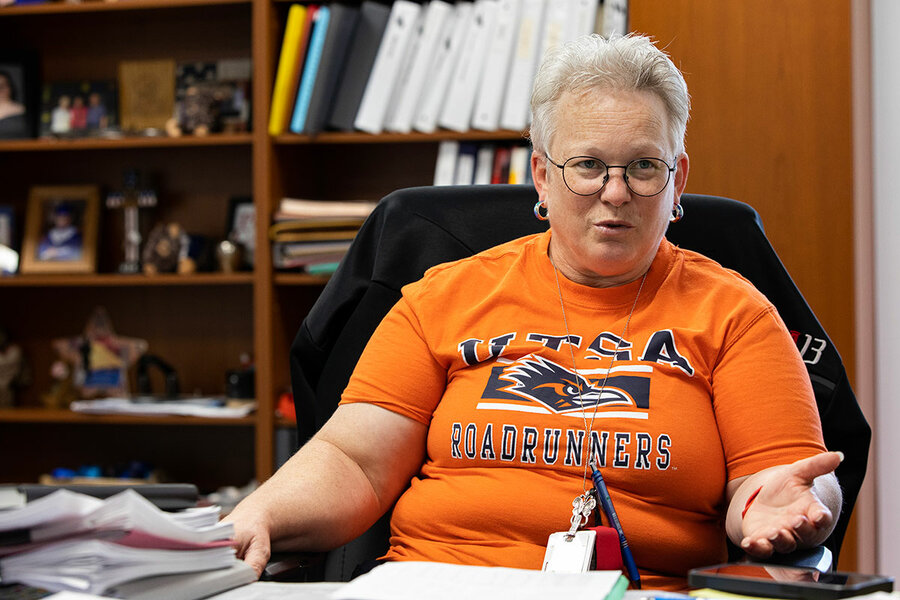
GOP’s new litmus test
The idea for vouchers is often credited to libertarian economist Milton Friedman, who in a 1955 paper argued that government should fund education but allow parents to choose what “educational services” the funds are spent on. Southern states put the proposal into action as a means to maintain de facto segregation toward the end of the Jim Crow era. In 1968, a U.S. Supreme Court ruling struck down state choice programs as racially discriminatory.
In the 2000s, voucher programs gained renewed momentum – now with establishment of religion concerns. In a 2002 case, the U.S. Supreme Court opened the door, saying for the first time that the government could give parents public money to spend at religious schools. The high court in recent years has made it even easier for private religious schools to access public funds. Meanwhile, dissatisfaction with public education has increased, particularly among Black and Hispanic parents.
The pandemic, and its aftermath, brought these concerns to a crescendo. “Parents’ rights” became a cornerstone of Republican campaigns in 2022, and school choice became a political and cultural issue like never before.
“It became not just a fringe issue, but a litmus test issue for the right wing of the [GOP] in ways that it hadn’t been before,” says Douglas Harris, a Tulane University professor and expert on the economics of education.
And in the past few years, voucher programs have exploded. What began in the 2000s as small, targeted programs in a few states to help low-income families or children with special needs is now expanding to include any family in a state.
Florida launched a scholarship program in 2019 providing vouchers for 18,000 students. A year later the state raised the number to more than 46,600 students. This year, state lawmakers are debating a bill that would lift requirements that families be lower-income or have children with special needs, potentially steering as much as $2.4 billion in public funds to private entities.
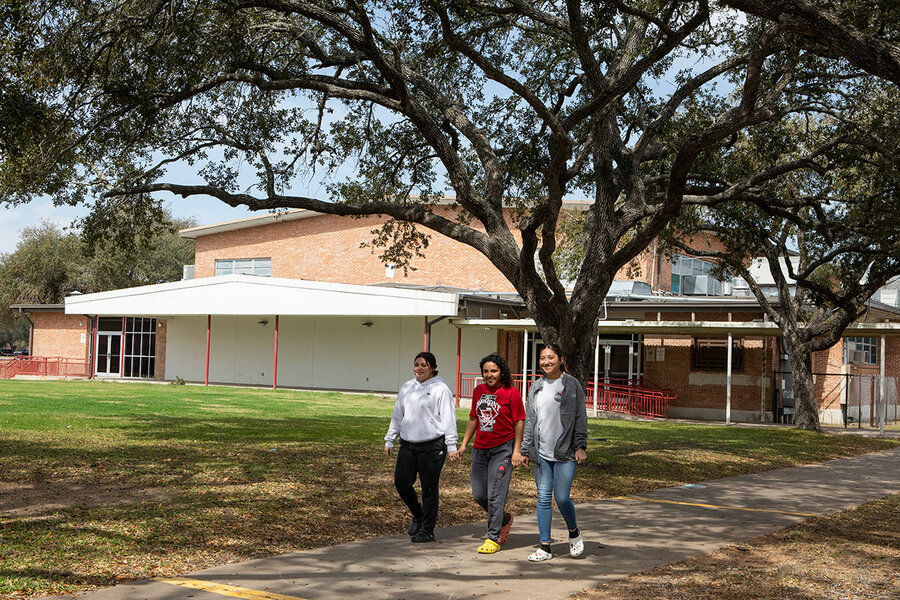
Arizona last year made its voucher programs – historically targeted to students in low-performing public schools, children with special needs, and children of active service members – open to every student in the state. This January, Iowa’s Republican Gov. Kim Reynolds signed into law an ESA program that will, after three years, be available to every family in the state.
Meanwhile, school choice options have rapidly expanded in Texas. The number of public charter schools in the state increased by 43% between 2014 and 2020 (now only California has more). Home schooling has also increased, including a 40% spike in 2020 and 2021, according to data collected by the Texas Home School Coalition, a nonprofit that promotes home schooling.
As these options have grown, public school enrollment in Texas is declining. Decreased birth rates in the state are also a factor. Competition for funding – which is based on average daily attendance – is fierce. But a program giving some of those public funds to private education entities has always been a nonstarter – until now.
“All in on school choice”
“The governor and I are all in on school choice,” said Lt. Gov. Dan Patrick in his inaugural address in January.
Coming from a prominent school choice supporter, the only surprise in that sentence was the first two words.
Gov. Greg Abbott – a conservative, but calculating, politician – led Texas for seven years without taking a clear position on vouchers. But in recent months he’s made it clear that he would like to see an ESA program.

“That will give parents the ability to choose the best education option for their child,” he said during a January speech in Corpus Christi, The Texas Tribune reported.
There is a reason Governor Abbott was quiet on this issue for so long. It’s because people like Rep. Ken King have been so loud.
Representative King is from Canadian, Texas – a town of 2,200 in a county of 3,200 in the Texas Panhandle. He has an ‘A’ rating from the National Rifle Association and has been endorsed by the Texas Alliance for Life. Among the bills he has sponsored this year is one that would impose “an additional fee for the registration of electric and hybrid vehicles.”
But he represents 19 mostly rural counties, and he doesn’t support a voucher program.
“If I have anything to say about it, it’s dead on arrival,” he said at a Texas Tribune event. “It’s horrible for rural Texas. It’s horrible for all of Texas.”
Mr. King’s staunch opposition to hurting small-town school funding is very much in line with his fellow rural Texans. Combined with opposition to vouchers from Democrats in the minority, school choice policies have struggled for votes.
Historically, “a lot of [rural Texans] felt like eroding the school, the funding process, was going to be a problem for their community, so they rejected it,” says Brandon Rottinghaus, a political scientist at the University of Houston.
But GOP officials around the country have ramped up criticism of public schools in the past two years – inspired by pandemic frustrations and concerns over how subjects like race, gender, and sexuality are taught.
“It’s [been] an electoral winner,” says Professor Rottinghaus, even though it might not be voters’ top issue. Given those national trends, he adds, “it’s a logical time – maybe the best time – for school choice proponents to act.”

Do voucher programs work?
The most common criticism of ESA programs is that they drain money from the public school system, making it harder for public schools to compete. In the long run, they could create a two-tiered education system that disadvantages families who want to – or have to – keep their children in public schools. Critics also argue that the primary beneficiaries of vouchers tend to be families who already can afford private school.
“Seventy-five percent of vouchers are going to end up going to kids who are already in private school,” says Superintendent Harris. “That 75% [are] public funds taken from us.”
School choice already exists in the area, he notes. There’s a charter school and four private schools in Texarkana, 25 miles away. Redirecting more public funds to a voucher program would make it even harder for rural schools to attract students.
“I just don’t see how vouchers would not harm public schools,” he says.
Then there is a question of whether switching to private schools improves outcomes for those students.
“Some studies have shown positive student outcomes, and some have shown negative student outcomes,” says Ben Erwin, senior policy analyst at the nonpartisan Education Commission of the States. “I wouldn’t say there’s a consensus in the field.”
“Advocates on both sides of this debate would argue potential benefits,” he adds.
But promoters of school choice say widespread damage to public schools hasn’t materialized in states with long-standing voucher programs.
In the past decade, Arizona public schools have improved from near bottom to above the national average in reading and math, per the National Assessment of Educational Progress. For two decades, Florida public schools have stayed at or above the national average for reading and math.
“You’re not seeing mass layoffs, mass school closures. What you’re seeing is schools organically, over time, responding to parent needs and improving their performance,” says Jason Bedrick, research fellow at the Center for Education Policy at the conservative Heritage Foundation.
Of course, the voucher programs in Arizona and Florida were both much smaller until this year.
Research has shown that students who opt into statewide voucher programs don’t improve. Ohio, Louisiana, Indiana, and Florida all have statewide programs “similar to the kinds of programs that are being designed and implemented now around the country,” says Dr. Harris at Tulane University.
Studies of the four programs found that, in all but Florida, “students who use vouchers learn less ... than they would have had they just gone to public schools,” he adds.
Other studies have reached different conclusions. An analysis of the literature by EdChoice, a nonprofit advocating for expanding school choice, concludes that these programs have had mostly positive effects.
Voucher supporters also note that states choose the degree to which they fund the program, and can strike a balance between public and nonpublic funding. In Texas, with its history of rural support for public schools, a compromise will likely be necessary.
“There are ways to satisfy all stakeholders here ... especially for the neediest students,” says Alexander Salter, an associate professor of economics at Texas Tech University. “School choice is a complement to, not a substitute for, the traditional public school system.”

Will the money come with expectations?
In Cushing, a rural town 100 miles due south of Atlanta, Brandon Enos thinks “competition makes us all better.” But he has one important caveat.
“If you add the accountability, I’m all for it,” says Dr. Enos, the Cushing ISD superintendent. “Money collected from taxpayers shouldn’t be given to private entities where there’s no accountability.”
Private educators generally aren’t subject to the same standards that public schools are – and the current bill doesn’t require them to release test results or account for how they spent taxpayers’ money, according to The Texas Tribune. Private schools and home-schools can pick and choose their students, enjoy less oversight in terms of curriculum and student progress, and discriminate against current or prospective students in ways that public schools can’t.
Parent Kathy Covey has the same concern – but from a different angle.
While Superintendent Harris has been working in East Texas public schools for the past 30 years, Ms. Covey has been home-schooling her eight children in Mauriceville.
“We’ve had to finance ourselves, and it can be difficult,” she says.
She would be interested in an ESA, but with one big question.
“When the government starts handing out money, ... we’re accountable then to them,” she says. “How much then would [the state] feel like they have a right to intervene?”
If Texas does create an ESA, Hope Owens doesn’t intend to make use of it.
Ms. Owens is president of the Texarkana Organization of Resolute Christian Homeschoolers (TORCH). She and her two children are part of the network of about two dozen local families who home-school. She’s “pretty content” with the size.
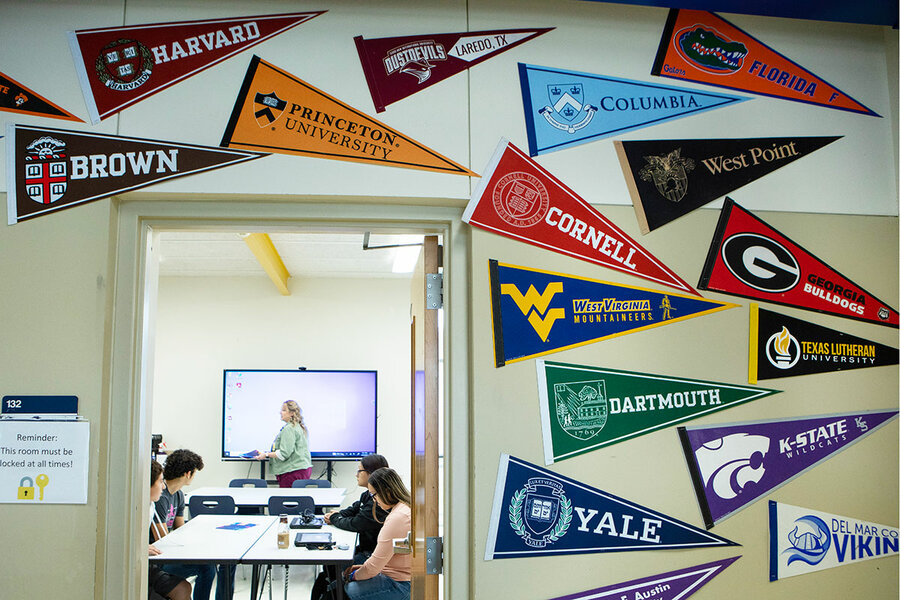
“I guess I’m a person who likes the government staying out of my business as much as possible,” she says.
Her husband is a robotics teacher at a public junior high school.
“I felt both options were there, but it came down to giving [them] a personal and a Christian education,” she adds. “I do feel like we’re able to shelter our kids more.”
If the Texas legislature does pursue an ESA program, specifics around accountability measures and the division of state funding will have to be worked out.
In Idaho last month, the Republican-dominated state legislature voted down an ESA law largely because those kinds of specifics weren’t clarified. It’s a sign that, even in solidly conservative states, voucher programs aren’t a slam dunk.
The proposed ESA program “could have serious negative consequences for many Texas school districts, especially those in rural areas,” writes state Sen. Judith Zaffirini, a Democrat whose district includes Freer and Premont ISDs, in an email.
The loss of per-student funding for every child who opts out of their local public school “could have a ripple effect, potentially leading to decreased funding for rural districts,” she adds. “Because rural schools already face funding disparities compared to their urban counterparts, this program could exacerbate these inequities.”
Voucher advocates claim that, because rural areas tend to have few options besides the local public school, those areas wouldn’t experience much change. Mr. Bedrick at the Heritage Foundation argues that it could keep families in small towns.
“Without school choice, their options are keep their child in that school knowing their child isn’t getting the best education they can get, or move,” he says.
“This can really help families stay in the communities they know and love.”
In The Zone
In South Texas, members of the Rural Schools Innovation Zone (RSIZ) believe they’re showing how rural public schools can give students the best education possible.
The first thing to note is that the buses have Wi-Fi.
The Zone is a way for smaller districts to team up and provide the services of a large district. But this creates challenges, like travel. When there are only so many hours in the day, and two of those are spent driving between campuses, that time is needed to study.
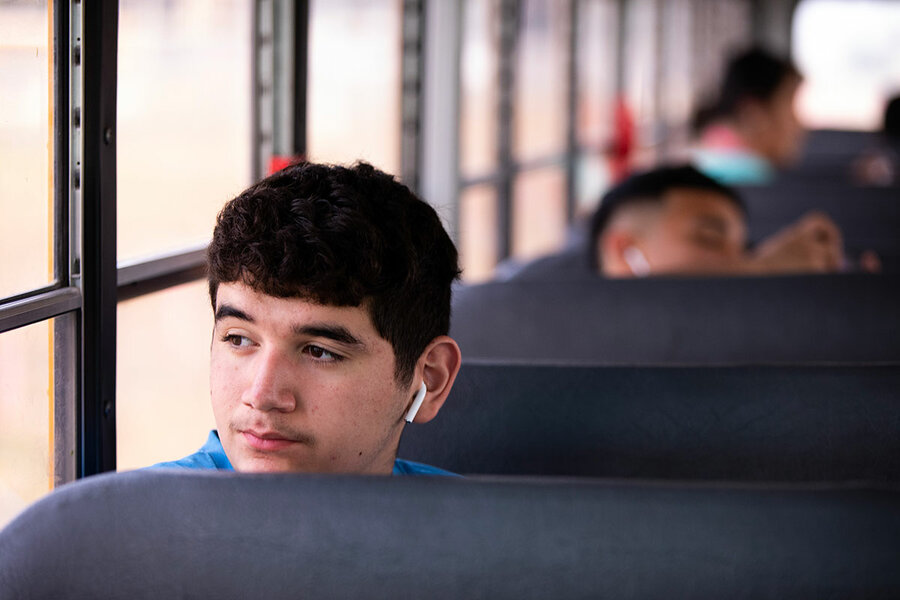
On this Thursday morning in late February, most of the 17 Premont students are chatting, napping, or listening to headphones as they drive south on a two-lane highway, hundreds of miles of ranchland sprawling around them.
Fifteen minutes later, the students step off a bus at Falfurrias High School. It’s time for welding class.
The Ignite Technical Institute – which trains students in welding, construction, and electrical systems – is one of five “academies” offered as part of the Zone by the three participating districts. Falfurrias also hosts the Junior ROTC program; Premont hosts the STEM and education training programs; and Freer hosts the medical training academy. The programs all enable the students to earn college credits or trade certifications, for free.
“The whole premise behind the Zone is that just because you go to a small school, or you live in a small town, you shouldn’t have your options limited,” says Ms. Garcia, the Premont high school principal.
It has taken a couple of years for the Zone to establish itself, but results are visible. For one, students are succeeding in the academies more than they used to.
Freer used to have a welding program and a nursing certification program. Neither was doing very well, says Conrad Cantu, the Freer ISD superintendent, not least because they couldn’t be a high priority for the small, resource-strapped district.
“We couldn’t even get kids to test [for nursing]. It was just kind of on the side,” he adds. “With 200 kids, it’s hard. We’re just trying to have school.”
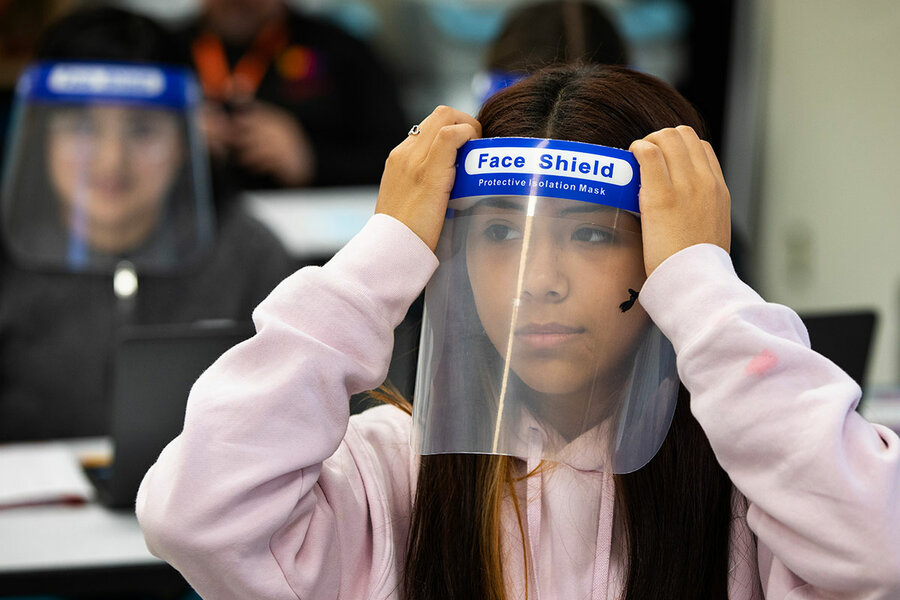
By joining the Zone, Freer was able to send its students to Ignite at Falfurrias and cut its own welding program – which then allowed it to improve and expand the medical program. There are now three dedicated classrooms for the Next Generation Medical Academy, with some equipment that nearby hospitals don’t even have.
And the three participating districts have seen student outcomes improve, particularly in terms of college, career, and military readiness.
Some Premont seniors, for example, spend part of their Thursdays at the school’s Grow Your Own Educator Academy. The next afternoon, they’re an hour away in Freer, at the Next Generation Medical Academy, practicing how to insert an IV.
“There is no way any one of those school districts could have supported five academies unilaterally,” adds Mr. VanMatre, the former Premont superintendent.
“You’re keeping [schools’] identities, you’re managing resources better, and you’re opening up opportunities for kids.”
But the Zone is still facing challenges – including an uncertain future.
Four years in, “not everyone is on board with the Zone,” says Mr. Gonzalez, the RSIZ executive director and former Premont high school principal. There have been arguments over scheduling, funding, discipline, even dress code. (Boys are allowed to wear earrings at Premont, but not at Falfurrias; Falfurrias athletes play games during the day, but Premont and Freer athletes don’t.) Fortunately, there haven’t been any fights.
The Zone needs a certain number of students to be viable. Premont and Freer have committed to at least two more years, but Falfurrias has been on one-year contracts. At the end of this school year, it will decide if it wants to stay involved. If it leaves, the programs might become too great a financial burden for Premont and Freer to bear.

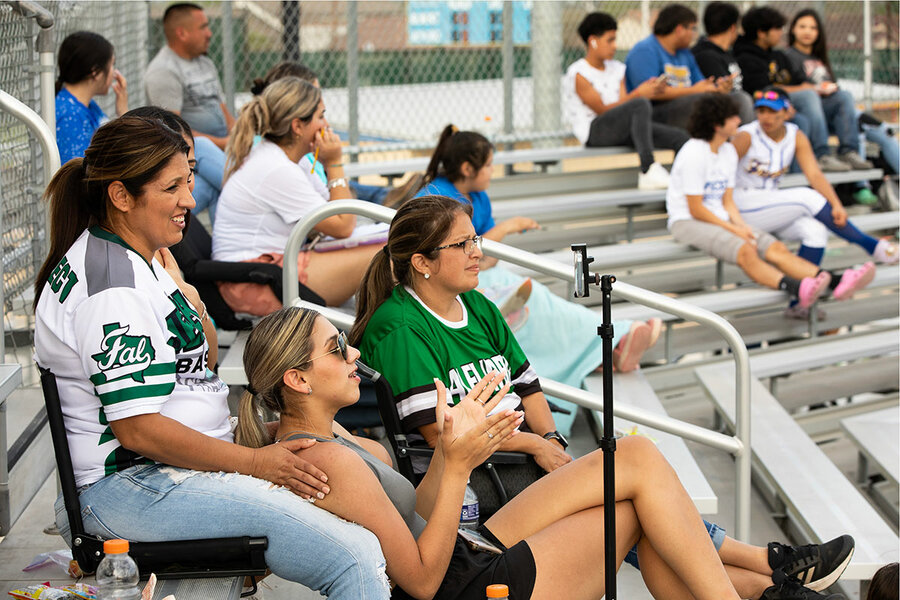
At a baseball tournament hosted by Freer, in the bleachers, Isabel Perez strikes a note of jealousy and gratitude. Her son, a junior on the Falfurrias baseball team, has been learning welding and electrical systems in the Ignite program.
“It’s awesome,” she says. “I wish they would’ve had it back in my time.”
He does welding and electrical work at home, which they’re remodeling, and at their ranch, she adds. But he doesn’t do it for free. (“Don’t work for free” is a soft skill all the academies teach.)
Ms. Perez doesn’t mind.
“It’s a great opportunity for all the kids to ... be independent and get their education early,” she says. “And it helps the parents, regardless of if the parents have the money.”
Ironically, Premont and Freer have been sports rivals for generations. Now they take classes together. The JROTC students even perform the color guard, together, before their schools play each other.
“The night we played in Freer [in football], the color guard was there, and it was kids from all three districts in the color guard,” says Principal Garcia.
“Our teams were fixing to get on the field and battle it out, but right before that, they were carrying the flag together,” she adds. “It’s really powerful.”

Patterns
It’s relationships that make the world go round
Today is Ned Temko’s 200th Patterns column. So what patterns in international affairs have revealed themselves in those five years? One predominates: Relationships are precious.

- Quick Read
- Deep Read ( 4 Min. )
Five years ago, when the first Patterns column was published, the world seemed increasingly disconnected and divided.
This week we publish the 200th column. While deep divisions persist, the single most powerful narrative that emerges from a rereading of the first 199 – a turnaround in world politics almost unthinkable five years ago – could grace a Valentine’s Day card.
Relationships are precious things.
Where once truculent nationalism was on the rise, two reality checks have changed the atmosphere.
The COVID-19 pandemic reminded citizens and their governments of the value of solidarity and mutual care. The Russian invasion of Ukraine galvanized a divided West into setting aside narrow national interests and facing up to President Vladimir Putin.
Mr. Putin failed to appreciate the power of relationships, revealed in both the sympathy felt by millions of outsiders toward the Ukrainians, and in NATO’s reinvigorated strength.
But there is another relationship challenge closer to home: rebuilding a sense of partnership and trust between citizens and government, and among citizens.
It won’t be easy, and it, too, risks sounding like a greeting card nostrum. But it, too, has real-life implications.
The freedom – vital for any healthy democracy – for citizens to speak their minds is only half the equation.
Equally important is the ability to listen.
It’s relationships that make the world go round

Relationships are precious things.
Those are words you would probably expect to read on a Valentine’s Day card, rather than at the top of a column about international affairs.
But this week’s Patterns is the 200th since it took an initial look, in February 2018, at a world that seemed increasingly disconnected and divided.
And while deep divisions persist, the single most powerful narrative that emerges from a rereading of the first 199 could indeed grace a Hallmark card.
It is that relationships matter. Or, to rephrase the English poet John Donne, no man, no woman, no citizen, no government, no country, is an island “entire of itself” – a turnaround in world politics almost unthinkable five years ago.
Back in 2018, the prevailing winds were gusting in the opposite direction.
A muscular, even truculent, brand of nationalism was on the rise. It was embodied, as that first Patterns column observed, by then U.S. President Donald Trump’s rallying cry of “America First,” and echoed in Britain’s withdrawal from its decades-long membership of the European Union.
It ranged far more widely, however – across Vladimir Putin’s Russia, Xi Jinping’s China, Narendra Modi’s India, and Jair Bolsonaro’s Brazil.
Yet two jolting stress tests – reality tests – have since made themselves felt.
The first was the COVID-19 pandemic, the greatest such challenge since the worldwide flu outbreak more than a century ago. Then came Mr. Putin’s invasion of Ukraine, provoking the deadliest conflict in Europe since World War II.

The pandemic was nature’s stark reminder of the importance of relationships – both between countries and within them.
As governments fumbled for the most effective response, none emerged unscathed. But those that fared best were those that relied on common bonds.
In Europe, for instance, governments’ initial impulse to turn inward and let neighboring states fend for themselves soon gave way to coordination and cooperation. And those states most effective in dealing with the pandemic – like New Zealand – were those whose leaders managed to galvanize a spirit of fellow-feeling among citizens and, critically, between citizens and their governments.
That rule ultimately held even for the most powerful of autocracies. China’s response, all but shutting its borders and imposing lockdowns on hundreds of millions of people, finally buckled before the spread of a new variant – and extraordinary grassroots pushback.
The war in Ukraine has also reinforced the importance of relationships.
On the eve of the invasion, with some 150,000 Russian troops massed on Ukraine’s border, it seemed quite possible that narrow national interests would preclude any common response from the West.
Indeed, a Patterns column before Mr. Putin attacked suggested he was striking at a politically opportune moment.
Yes, U.S. President Joe Biden had been rebuilding the transatlantic NATO alliance, which Mr. Trump had denigrated and dismissed. But the Europeans remained skeptical about its staying power, especially after having been blindsided by America’s rushed and chaotic withdrawal from Afghanistan. Two key European allies, Germany and France, also seemed reluctant to risk the prospect of a fundamental rupture in their ties with Moscow.
But Mr. Putin turned out to have miscalculated.

It’s not just that he failed to reckon on the remarkable leadership of Ukraine’s President Volodymyr Zelenskyy and the courage of its people.
He also failed to appreciate the power of relationships, revealed in both the sympathy and solidarity felt by millions of people in Europe, the U.S., and beyond toward the Ukrainians, and in NATO’s reinvigorated strength. The alliance pulled back together, emerging reinforced by the decision by two of Russia’s neighbors, Finland and Sweden, to join.
A key question remains open, though: How will renewed recognition of the importance of such relationships impact a still-turbulent world?
The Ukraine war rages on. The world’s two most powerful nations, the U.S. and China, are at loggerheads. The political climate in America and in a number of other democracies remains bitterly partisan.
At least for now, the renewed strength of NATO seems secure. Indeed, there has been a ripple effect in Asia, where American allies have been reinforcing their relationships amid concern that China could take a leaf from Mr. Putin’s book and seek to invade Taiwan.
But there’s a further lesson from the old, post-World War II architecture of world politics: relationships matter not just with friends, but with foes as well. That was a big reason that the Cold War years, in good times and bad, did ensure an underlying stability that helped head off major conflict.
This is something that Washington and Beijing have not yet got right.
And there is another relationship challenge for major democracies closer to home: rebuilding a sense of partnership and trust between citizens and government, and among citizens across increasingly barbed partisan lines.
The encouraging news for America is that democracies are far better positioned to meet that test than ostensibly strong, yet inherently vulnerable, regimes like Iran’s or Russia’s.
But how?
It’s not likely to be an easy process, nor a quick one, and it, too, risks sounding like a greeting card nostrum. But it, too, has real-life implications.
The freedom – vital for any healthy democracy – for citizens to speak their minds is only half the equation.
Equally important is the ability to listen.

On Film
Some of 2022’s best performances, Oscar or not
Great acting helps us transcend what divides us and become someone else for a few hours. Ahead of the Oscars, our film critic shares his picks for standout performances.

-
By Peter Rainer Contributor
Some of 2022’s best performances, Oscar or not
Great movie acting provides an extraordinary passageway into a protagonist’s soul. This mysterious alchemy is the height of the performer’s art. The actor fuses with the role and, in a sense, so do we. More than simply identifying with the character, we are that character.
Movie acting rarely reaches such heights, but when it does, or even comes anywhere close, it can transform a middling film into a must see.
We are now in the run-up to the Oscars, airing March 12 on ABC, and, as usual, along with a few favorite nominated standouts, there are many performances I admired in 2022 that went unrecognized by the Academy of Motion Picture Arts and Sciences. I’ll weigh in on both.
Best actress
Of the five best actress Oscar nominees, the two that rang the bell for me were Cate Blanchett in “Tár” and Andrea Riseborough in “To Leslie.”
Except for Blanchett’s hyperdriven portrayal, I thought her film was vastly overrated – a love-hate letter to the tribulations of musical artistry that was way too heavy on the hate. But whatever one thinks of her role as an autocratic orchestral conductor with a taste for sexual predation, Blanchett gives a full-on portrayal of a woman self-immolating in her own sovereignty.

It’s too bad that Riseborough’s nomination was attacked in some quarters for its movie-star-driven Oscar campaign, mostly by people who hadn’t seen the movie. (It came and went almost without a trace last year.) Her inclusion made some feel that other acclaimed performances, like those of Viola Davis in “The Woman King,” or Danielle Deadwyler in “Till,” got pushed out. But Riseborough belongs in this company. She plays a West Texas former lottery winner and single mother whose boozy life is in free fall. Her darting, ardent performance avoids all the scenery-chewing clichés endemic to these sorts of roles. I didn’t detect a false note in it.
Among the unnominated, I did especially admire Davis’ performance as the leader of an all-female West African battalion in the slave-trading early 1800s. There has always been a fierceness to Davis’ acting, even in repose. In this film, she looks both indomitable and ravaged. In the little-seen Irish film “God’s Creatures,” Emily Watson is a doting mother who lies to the police to protect her criminal son, played by Paul Mescal (who was rightly nominated for best actor as a troubled father in “Aftersun”). Watson shows us the anguish born of torn loyalties. Her face becomes a map of brutish sorrow.

Something of the sort can also be seen in Nathalie Boutefeu’s plangent performance as Leo Tolstoy’s long-suffering wife Sophia in “Un Couple” (“A Couple”). This one-woman monologue, shot mostly outdoors on a sprawling estate, was directed by longtime documentarian Fred Wiseman and dramatizes Sophia’s voluminous notes and diary entries. Boutefeu, who co-wrote the screenplay with Wiseman, brings it all to life. Her portrait is alternately forgiving, pleading, and vehement.
Lest you think all the best work in this category occurred in the gloomy realms, there was also Leslie Manville’s superbly graceful and touching turn in “Mrs. Harris Goes To Paris” as a working-class charwoman whose high-fashion fantasies are fulfilled. And should you desire further proof of Manville’s astonishing versatility, just think back to her diametrically different, Oscar-nominated performance as the stern sister of Daniel Day-Lewis’ haute couture dressmaker in “Phantom Thread.”
Best actor
The five Oscar nominees for best actor are all recommendable. Besides Mescal, Austin Butler is a triumphantly convincing Elvis Presley in “Elvis”; Brendan Fraser is good enough in “The Whale” to make you almost forget the character’s prosthetic tonnage; and Bill Nighy deftly underplays as a civil servant facing his own mortality in “Living.”

I liked Colin Farrell in the overrated “The Banshees of Inisherin,” though his performance as Pádraic, a dullish man who wakes up to his ire when his best friend unaccountably rejects him, takes a while to cook. (The friend is well played by supporting actor nominee Brendan Gleeson.) Two unnominated performances were startlingly good: Caleb Landry Jones, who won the best actor award at the 2021 Cannes film festival in the barely seen “Nitram,” delivers an utterly original portrayal of a real-life Australian mass shooter. In “The Good Nurse,” Eddie Redmayne plays a nurse, also real-life, whose hospital murders have long gone undetected. Like Jones, he reimagines a seemingly standard villain into something entirely new.
Best supporting actress
Kerry Condon, as the exasperated sister of Farrell’s Pádraic in “The Banshees of Inisherin,” stands out for me among the nominees for best supporting actress. Her deeply knowing performance, so quietly comic and yet so passionate, radiates emotion in all directions.
In this category, the Academy particularly failed to notice some of the year’s best work. As two of the women who spoke out against Harvey Weinstein in “She Said,” both Jennifer Ehle and Samantha Morton, in cameos, put a human face on searing testimony that most of us had only read about. Judy Davis, as the mother of the shooter in “Nitram,” demonstrates yet again that, at her best, there is no one who surpasses her power or intensity. Why has this great actress not had more great roles?
The most welcome appearance this year was Frankie Corio, who plays the doting 11-year-old daughter in “Aftersun” opposite Mescal. The film’s structure is elliptical and arty, but Corio grounds it. Her Sophie has the fervor of an adolescent moving tentatively – and bewilderingly – into young adulthood. Whether Sophie is singing bad karaoke or absorbing her father’s woes, Corio easily holds her own with Mescal. No small feat. It’s always especially exciting to discover a potentially major performer so early in her career.

Best supporting actor
Of the Oscar nominees for best supporting actor, far and away the strongest for me is Brian Tyree Henry, who plays opposite a very fine Jennifer Lawrence as a troubled auto mechanic in “Causeway.” I remember seeing him in “If Beale Street Could Talk” and thinking I had not seen a finer portrayal all year. Lawrence plays an injured war vet experiencing PTSD, and Henry’s character has his own demons. His performance is so richly inhabited that even when he’s just bellying up to the bar or sharing some ice cream, the character’s full set of sympathies comes through. His easygoing nature is a poultice for his grief.
Among the unnominated, I would single out two very different acting jobs from Anthony Hopkins.
In “Armageddon Time,” he plays an Old World Jewish grandfather without a trace of shtick. In the otherwise mediocre “The Son,” his single appearance as a rapacious father opposite Hugh Jackman not only steals the scene. It steals the movie.
Peter Rainer is the Monitor’s film critic.
Other headline stories we’re watching
(Get live updates throughout the day.)The Monitor's View
Why the high-fives for a high seas treaty
- Quick Read
- Deep Read ( 2 Min. )
-
By the Monitor's Editorial Board
More than half of the Earth’s surface lies beyond the control of any nation, one reason that vast parts of the oceans are called the “high seas.” On ancient maps, such waters were often marked “dragons be there,” or a place for troublemakers and conflict. Last Saturday, 193 countries agreed to be peacemakers of these seas. They reached a deal at the United Nations that, if ratified by 60 nations to become a legally binding treaty, could turn countries into custodians of marine life rather than competitors in exploiting it.
One reason the agreement did not attract much attention is that the world already has a strong record since the 1950s of setting aside state sovereignty to ensure peace, common governance, and sustainability in places where human habitation is well-nigh impossible: the two polar regions, the seabed, near-Earth outer space, and the moon. Protecting marine life and its biodiversity was a last frontier for humans to declare conflict, destruction, and violence off bounds in stateless areas.
“Despite everything, peace prevails in these non-national domains,” writes Northeastern University scholar Denise Garcia. “Cooperation is the main characteristic.”
Why the high-fives for a high seas treaty

More than half of the Earth’s surface lies beyond the control of any nation, one reason that vast parts of the oceans are called the “high seas.” On ancient maps, such waters were often marked “dragons be there,” or a place for troublemakers and conflict. Last Saturday, 193 countries agreed to be peacemakers of these seas. They reached a deal at the United Nations that, if ratified by 60 nations to become a legally binding treaty, could turn countries into custodians of marine life rather than competitors in exploiting it.
One reason the agreement did not attract much attention is that the world already has a strong record since the 1950s of setting aside state sovereignty to ensure peace, common governance, and sustainability in places where human habitation is well-nigh impossible: the two polar regions, the seabed, near-Earth outer space, and the moon.
Protecting marine life and its biodiversity was a last frontier for humans to appeal to their better angels and declare conflict, destruction, and violence off bounds in stateless areas that might become flashpoints.
The range of sanctuaries from space to seabed reflects a rising recognition of a deeper harmony at work as much as a desire to protect habitats or the safeguarding of resources for future generations. The High Seas Treaty would affirm a norm, common in many bilateral deals between states to share resources, that working together to protect the environment can create peaceful neighbors.
One particular strength of the treaty would be the establishment of marine protected areas in high sea locations of special value. It also calls for environmental impact assessments of resource extraction for deep sea activities.
“Despite everything, peace prevails in these non-national domains,” writes Northeastern University scholar Denise Garcia in International Relations journal. “Cooperation is the main characteristic.”
One cause for this progress is a growing acceptance that each individual – more than powerful leaders or institutions – has the sovereign agency to participate in collective decisions to protect the natural world. “This shift is manifest in the increased legal personality of the individual under international law who has rights and duties and can be liable to wrongdoing,” states Ms. Garcia.
The new agreement, which took some 15 years of negotiations, shows that what binds neighbors can be greater than what divides them. “Protecting nature and people can triumph over geopolitics,” said Laura Meller, an oceans campaigner for Greenpeace.
Peace is not merely the absence of war. It can also entail a broad vision of life’s infinite expressions and intrinsic harmony, from the moon jellyfish to the moon’s surface, as part of a shared commons – not a commons of sad tragedy but of unifying triumph.

A Christian Science Perspective
Each weekday, the Monitor includes one clearly labeled religious article offering spiritual insight on contemporary issues, including the news. The publication – in its various forms – is produced for anyone who cares about the progress of the human endeavor around the world and seeks news reported with compassion, intelligence, and an essentially constructive lens. For many, that caring has religious roots. For many, it does not. The Monitor has always embraced both audiences. The Monitor is owned by a church – The First Church of Christ, Scientist, in Boston – whose founder was concerned with both the state of the world and the quality of available news.
Spiritual exploration – and healing
- Quick Read
- Read or Listen ( 3 Min. )
-
By Deborah Huebsch
Just as in the physical sciences, earnestly asking spiritual questions in prayer can bring aha! moments and progress to our lives.
Spiritual exploration – and healing
Questions open the door to wonderful things. For example, for mankind to go to the moon, the quest had to start with questions: Is it possible? How can we do it? Clearly, the answers were there and we went to the moon. But before that could happen, scientists had to open themselves up to ways of understanding the universe that challenged personal opinions, preconceptions, and limitations.
The physical sciences, based heavily on exploration and discovery, have always relied on questions to break new ground. The same could be said for the Science of Christianity, which came as a spiritual breakthrough for a 19th-century woman – Mary Baker Eddy – who’d been questioning the nature of reality and searching for answers for her ill health for decades. After a near-fatal injury, she experienced a startling healing, which prompted further deep questions that she went on to answer over the course of the rest of her life.
Asking the kind of probing spiritual questions that take us beyond the boundaries of what we perceive – or think we know – can be a powerful tool in forwarding our own growth Spiritward, as well as in experiencing healing.
There is ample biblical evidence of questions as a prelude to healing. Christ Jesus often asked questions before he accomplished his mighty works. For example, “Wilt thou be made whole?” “Children, have ye any meat?” These questions demanded that the listener challenge their limited concepts of their own identity, of God, and even of reality.
With each question, expectations were tested. It was as if Jesus was driving home the point that some shift in consciousness was required for healing. His questions pushed his listeners to see beyond what they considered to be reality, and through Christ, the illuminating activity of Truth, their concepts were transformed. Healing was the result.
Posing questions is a great way to allow God, divine Mind, to reveal Himself to us. I frequently ask God, “What do I need to know?” Or, “What do I need to pray about?” God, infinite intelligence, is already conscious of every idea. But questions help open our thought to this divine intelligence, and through the activity of the ever-present Christ, answers come – to all of us.
Once, a friend told me she hadn’t been able to keep food down for three days and asked if I would pray with her. I was happy to, and my prayer was, “God, what do I need to know?”
The idea came distinctly to pray about resentment. “No,” I thought, “that couldn’t be right.” So I asked again: “Please, God. What?” The answer was the same. I asked yet again. The same thing. Finally I got the message and prayed. I knew that because God, Love, fills all space, there couldn’t be anything else but Love.
Several hours later I saw my friend and asked how she was feeling. She told me she was fine, and that she’d had a hamburger, fries, and a milkshake for lunch! But she said the best thing was that she and her husband had made up after three days of not speaking because of a huge fight. I’d had no idea they’d been at odds. But posing the question – and really listening to the answer – revealed what actually needed to be addressed.
Over the course of history, the greatest discoveries and scientific advances have come as scientists and explorers have dared to envision life beyond what the eye can see. In the same way, as we engage in spiritual exploration, we too must go beyond surface appearances to see more of reality. “Where shall the gaze rest,” asked Mrs. Eddy, “but in the unsearchable realm of Mind?” (“Science and Health with Key to the Scriptures,” p. 264).
Questions give us access to this realm of infinite Mind, where we can explore the amazing depth and breadth of God. In this realm, which is the only real universe, we find our educated – but ultimately faulty – beliefs about life being revised or overturned. We discover that divine Spirit truly is the only substance – our only substance; that divine Love cares for us, and supplies everything we need. Our view naturally expands to look out from Mind, and the result, even when we may not specifically be seeking it, is the adjustment in our lives that we call healing.
Let’s keep on asking questions – and listening for God’s glorious answers.
Adapted from an editorial published in the February 2023 issue of The Christian Science Journal.

Viewfinder
The fog of war
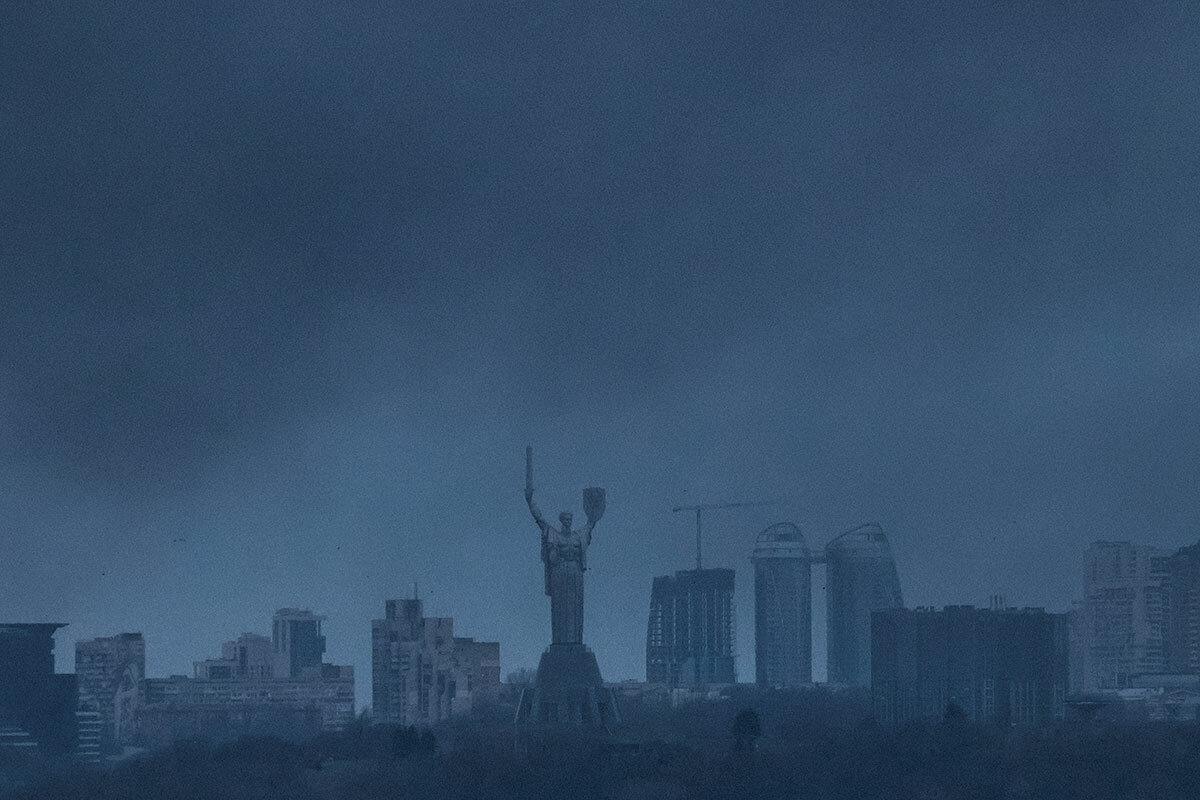
A look ahead
Thank you for joining us today. Please come back tomorrow when we look at the upheaval around a planned police training center in Atlanta and what it says about Americans’ efforts to find a balance between protest and law and order.



